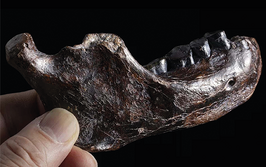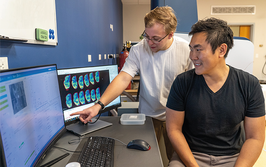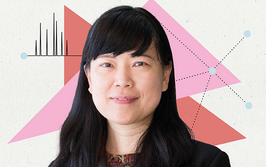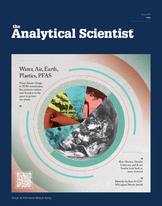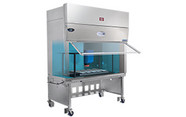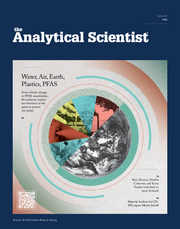“Western Diet” Fuels Lung Cancer
Spatial metabolomics reveals that glycogen accumulation – exacerbated by high-fat, high-fructose diets – accelerates lung cancer
James Strachan | | 3 min read
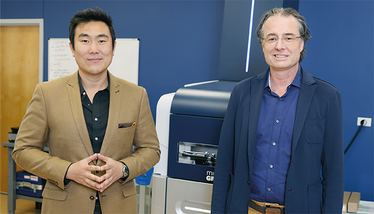
A study from the University of Florida has identified glycogen as a key metabolic driver of tumor growth in lung adenocarcinoma (LUAD), thanks to a next-generation spatial metabolomics platform.
The team, led by Ramon Sun, Associate Professor and Director of the Center for Spatial Biomolecule Research (CASBR), mapped out the precise locations and roles of glycogen – once thought to be a passive energy store – within intact tumor tissues. They found that glycogen accumulates uniquely in LUAD cells, is correlated with tumor grade, and drives disease progression.
“We were especially surprised to find that glycogen is uniquely accumulated in tumors and that its buildup is induced by a diet high in fat and sugar,” says Sun. “More importantly, eliminating glycogen synthesis specifically in cancer cells significantly blunted tumorigenesis in vivo.”
Sun, trained in cancer metabolism and biochemistry, was inspired by the challenge of doing something different. “I wanted to fundamentally change how we study metabolism,” he says. “That led me to MALDI imaging and spatial metabolomics. My goal was to tackle the most pressing problem in in vivo metabolism: resolving the metabolic microenvironment with spatial and cellular resolution.”
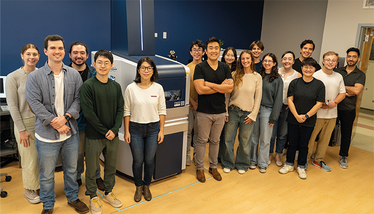
Sun’s spatial metabolomics platform, developed in 2020, combines large scale MALDI mass spectrometry imaging with isotope tracing and 3D anatomical registration.
“Our platform is designed to help biologists address key challenges in metabolism,” says Sun. “Unlike static mapping, we visualize dynamic fluxes across intact tissue volumes and connect them to anatomical and cellular structures. This approach translates MALDI imaging from a tool for analytical chemists to one broadly usable by biologists.”
Mapping Metabolism in 3D
In another recently published paper, Ramon Sun’s team introduced MetaVision3D, an AI-powered pipeline that turns 2D MALDI mass spectrometry images into high-resolution 3D maps of tissue metabolism.
The platform uses computer vision AI to align, normalize, and reconstruct serial tissue sections, enabling researchers to visualize metabolite distributions across entire organs. As a proof of concept, the team built a spatial metabolomics atlas of the 3D brain, now freely available at metavision3d.rc.ufl.edu, including models of Alzheimer’s and Pompe disease.
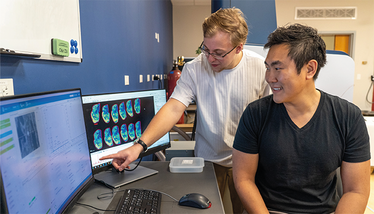
The platform allowed the researchers to simultaneously assess glycogen and cellular metabolites, uncovering a direct relationship between glycogen levels and elevated central carbon metabolites essential for tumor growth.
The team also found that increased glycogen promotes accelerated tumor progression in a LUAD mouse model. But when unable, due to genetic modification, to synthesize glycogen, the same cancer mouse model did not form mature tumors – further confirming the role of glycogen metabolism in LUAD.
“When paired with the right genetic and molecular biology methods, spatial metabolomics can help uncover new insights into health, disease, and many of life’s unresolved mysteries,” says Sun. “It is a powerful hypothesis-generating tool, it enables us to ask the right questions in biology.”
The researchers are now applying spatial metabolomics to study brain tumors, liver cancer, Alzheimer’s disease, and rare diseases such as Ewing sarcoma and Pompe disease. “We are integrating spatial metabolomics with AI, engineering, molecular biology, mouse genetics, and human research,” says Sun. “Our goal is to re-examine long-standing diseases through the new lens of spatial metabolism.”

Over the course of my Biomedical Sciences degree it dawned on me that my goal of becoming a scientist didn’t quite mesh with my lack of affinity for lab work. Thinking on my decision to pursue biology rather than English at age 15 – despite an aptitude for the latter – I realized that science writing was a way to combine what I loved with what I was good at.
From there I set out to gather as much freelancing experience as I could, spending 2 years developing scientific content for International Innovation, before completing an MSc in Science Communication. After gaining invaluable experience in supporting the communications efforts of CERN and IN-PART, I joined Texere – where I am focused on producing consistently engaging, cutting-edge and innovative content for our specialist audiences around the world.

